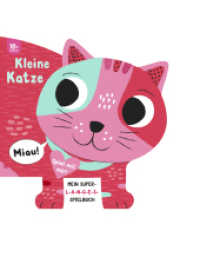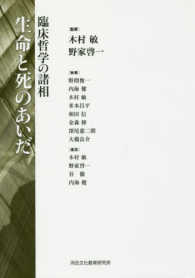- ホーム
- > 洋書
- > ドイツ書
- > Mathematics, Sciences & Technology
- > Sciences
- > sciences generally
Full Description
Focussing on late medieval and early modern philosophy and medicine, this edited collection explores the replacement of hylomorphism—the dominant theory of bodies in the Middle Ages—with new theories of matter such as corpuscularianism and atomism at the dawn of the Modern period.








